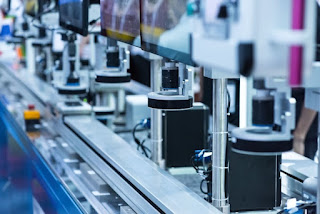Exploring the Power and Versatility of Linear Actuators
In the realm of automation and mechanical engineering, linear actuators stand as silent heroes, driving movement with precision and efficiency. From industrial applications to everyday household gadgets, these devices play a crucial role in transforming rotational motion into linear motion, powering everything from robotic arms to adjustable furniture. In this article, we delve into the world of linear actuators, exploring their types, applications, and the importance of heavy-duty variants in various industries.
Understanding Linear Actuators
At its core, a linear actuator is a device that converts energy into straight-line motion. Unlike rotary actuators, which produce rotational motion, linear actuators provide movement along a single axis. This functionality makes them indispensable in numerous industries, ranging from automotive and aerospace to healthcare and home automation.
Types of Linear Actuators
Linear actuators come in a variety of types, each designed to suit specific applications and operating environments. Some of the most common types include:
Electric Linear Actuators: Electric linear actuators utilize electric motors to generate linear motion. These actuators are prized for their precision, controllability, and ease of integration with electronic systems. They find widespread use in robotics, industrial automation, and home appliances.
Hydraulic Linear Actuators: Hydraulic linear actuators rely on hydraulic pressure to drive motion. They are capable of generating high forces and are often used in heavy-duty applications such as construction equipment, material handling, and agricultural machinery.
Pneumatic Linear Actuators: Pneumatic linear actuators use compressed air to produce linear motion. While they offer fast response times and simple operation, they are generally not as powerful as hydraulic actuators. Pneumatic actuators find applications in areas such as packaging machinery, conveyor systems, and pneumatic tools.
Mechanical Linear Actuators: Mechanical linear actuators employ mechanical means such as screws, belts, or chains to achieve linear motion. These actuators are reliable and cost-effective, making them suitable for various applications, including lifting mechanisms, gate control, and positioning systems.
The Importance of Heavy-Duty Linear Actuators
While all types of linear actuators serve valuable purposes, heavy-duty linear actuators play a particularly critical role in industries where robustness and reliability are paramount. These specialized actuators are engineered to withstand high loads, harsh environments, and intensive usage, making them indispensable in challenging applications.
Applications of Heavy-Duty Linear Actuators
Industrial Machinery: In manufacturing and processing plants, heavy-duty linear actuators are utilized in machinery such as press brakes, stamping equipment, and injection molding machines. These actuators enable precise control over large-scale movements, ensuring the efficiency and quality of production processes.
Construction Equipment: From excavators and bulldozers to cranes and dump trucks, heavy-duty linear actuators power various functions in construction machinery. Whether it's extending booms, tilting buckets, or raising/lowering platforms, these actuators provide the muscle needed to tackle demanding construction tasks.
Off-Highway Vehicles: Heavy-duty linear actuators are integral components in off-highway vehicles like agricultural tractors, forestry equipment, and mining trucks. They facilitate functions such as steering, lifting, and tilting, enabling operators to maneuver equipment effectively in rugged terrain and harsh conditions.
Marine and Aerospace Systems: In marine vessels and aircraft, heavy-duty linear actuators contribute to critical operations such as steering control, landing gear deployment, and cargo handling. These actuators must withstand extreme temperatures, corrosive environments, and high levels of vibration, ensuring the safety and reliability of transportation systems.
Conclusion
Linear actuators represent a cornerstone of modern engineering, driving motion and functionality across a diverse array of industries and applications. From electric and hydraulic variants to pneumatic and mechanical designs, these devices offer versatility, precision, and efficiency in converting rotational energy into linear motion. Among them, heavy-duty linear actuators stand out for their ability to tackle the toughest challenges, providing robust performance in demanding environments. Whether it's powering industrial machinery, construction equipment, or off-highway vehicles, these heavy-duty workhorses ensure that the wheels of progress keep turning, quite literally.




Comments
Post a Comment